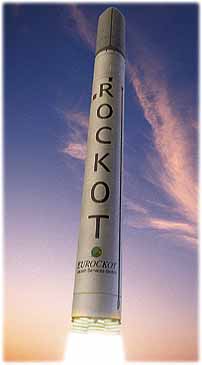
|
Rockot Launch Vehicle
Missions | History / Production | Technical Description | Rockot and the GRACE program | Rockot Images | 
Based on the Russian RS-18 (U.S. designation SS-19) Stiletto Intercontinental Ballistic Missile, the world first got a glimpse of the Rockot launch vehicle when it was launched from Baikonur in December of 1994. Designed to fill the gap between the workhorse Kosmos (1,500 kg to LEO) and Tsyklon (3,600 kg to LEO) vehicles, Rokot's payload capacity of 1,900 kg is perfect for launching two medium-sized satellites into Low Earth Orbit. Government users of Rockot include the Russian Space Agency and Ministry of Defense. Khrunichev State Research and Production Space Center, the manufacturer of Rokot (as well as the Proton launch vehicle and the MIR Space Station), has entered into a partnership with Daimler-Chrysler Aerospace of Germany (DASA) to market Rokot commercially. Known as the Eurockot Corporation, Khrunichev and DASA started marketing the Rokot launch vehicle in 1997. Commercial Rokot launches will originally take place at Plesetsk, site of more than one-third of all of the launches in the world. When scientists designed Rockot, a multi-ignitable and highly maneuverable third stage was added. The complete Rokot system, including the third stage, has been proven in two suborbital flights and one orbital flight with a 100 % success rate. The last flight transported an amateur radio satellite (RS-15 Radio-ROSTO) from the Baikonur launch site into a 1881 km x 2163 km x 64.80 orbit. Many Rockot components such as the third-stage engine have a proven heritage from older Russian space programs. Scientists have devised a special revalidation procedure to ensure the correct functioning of the ICBM-derived first and second stages for use in the Rokot program . Improvements to the Rockot launch vehicle were decided upon by Eurockot in early 1998 to allow accommodation of larger payloads under the fairing. |

